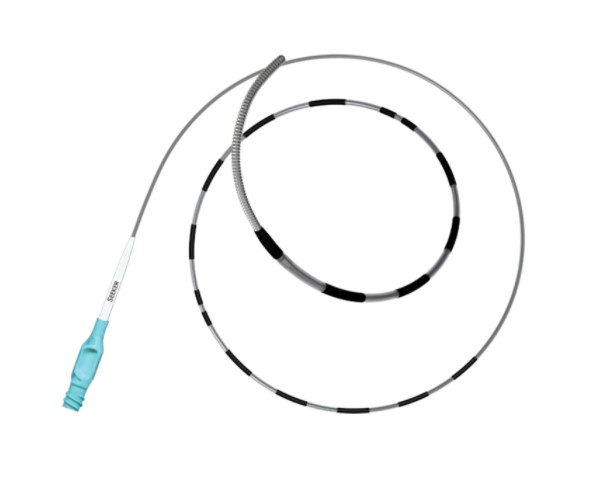Indications for Use
The SEEKER Crossing Support Catheters are recommended for guidewire exchange and infusion devices designed for use in the peripheral vascular system. The catheters are intended to support a guidewire during access into the vasculature. allow for guidewire exchanges. and provide a passage for delivery of saline solutions and/or diagnostic contrast agents.
Contraindications
None known.
Warnings
1. Contents supplied STERILE using ethylene oxide (EO). Non-Pyrogenic. Do not use if sterile barrier is opened or damaged. Single patient use only. Do not reuse, reprocess or resterilize.
2. This device has been designed for single use only. Reusing this medical device bears the risk of cross-patient contamination as medical devices — particularly those with long and small lumina, joints, and/or crevices between components — are difficult or impossible to clean once body fluids or tissues with potential pyrogenic or microbial contamination have had contact with the medical device for an indeterminable period of time. The residue of biological material can promote the contamination of the device with pyrogens or microorganisms which may lead to infectious complications.
3. Do not resterilize. After resterilization, the sterility of the product is not guaranteed because of an indeterminable degree of potential pyrogenic or microbial contamination which may lead to infectious complications. Cleaning, reprocessing and/or resterilization of the present medical device increases the probability that the device will malfunction due to potential adverse effects on components that are influenced by thermal and/or mechanical changes.
4. When the catheter is exposed to the vascular system, it should be manipulated while under high-quality fluoroscopic observation.
5. While retracting the catheter, if resistance is met during manipulation, determine the cause of the resistance before proceeding. Applying excessive force to the catheter can result in tip breakage or catheter separation.
6. After use, this product may be a potential biohazard. Handle and dispose of in accordance with acceptable medical practices and applicable local, state and federal laws and regulations.
7. Exceeding the maximum injection pressure of 300 psi may result in catheter failure.
Precautions
1. Carefully inspect the catheter prior to use to verify that catheter has not been damaged during shipment and that its size, shape and condition are suitable for the procedure for which it is to be used. Do not use if product damage is evident.
2. The SEEKER' Crossing Support Catheter shall only be used by physicians trained in the use of vascular diagnostic catheters.
3. The minimal acceptable sheath French size is printed on the package label. Do not attempt to pass the crossing support catheter through a smaller size introducer sheath than indicated on the label. 4. Only use guidewires of the recommended diameter as noted on the packaging.
5. Flush catheter with sterile saline until saline is seen exiting distal tip.
6. If resistance is felt during post procedure withdrawal of the catheter, it is recommended to remove the catheter, introducer sheath and guidewire (as necessary) as a single unit.
7. Do not continue to use the catheter if the shaft has been kinked.
8. Prior to re-insertion through the introducer sheath, wipe the catheter clean with wet gauze, flush with sterile saline, and check the tip for damage and kinking.
9. Rotate inventory so that the catheters and other dated products are used prior to the "Use By" date. 10. If the catheter is to be used as an infusion catheter, reference Table 2 to ensure proper infusion rates/pressures are utilized and not exceeded.
